Taking a Voltage Measurement With an Ideal Voltmeter
by jblev922 in Circuits > Tools
655 Views, 0 Favorites, 0 Comments
Taking a Voltage Measurement With an Ideal Voltmeter
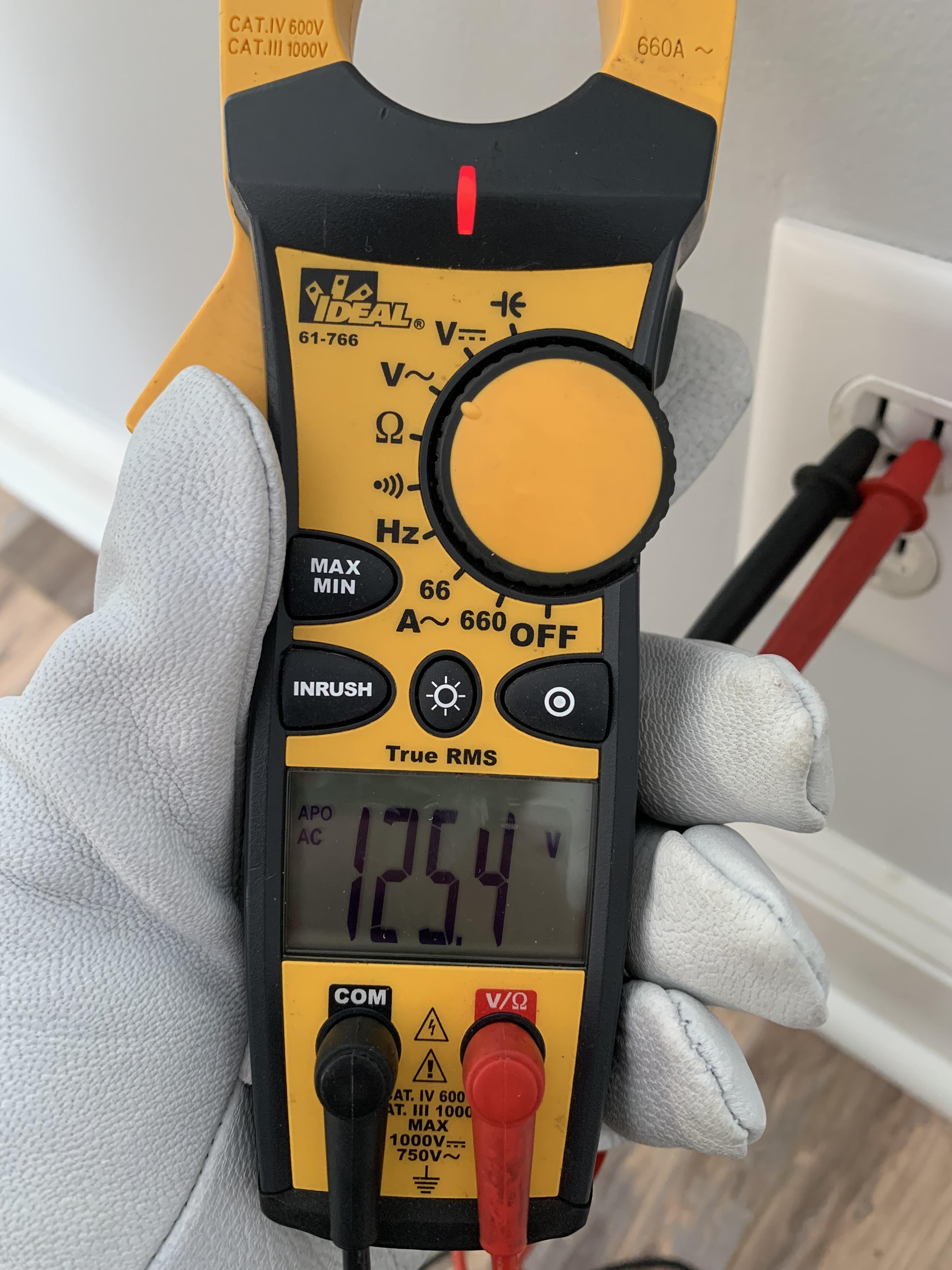
A Voltmeter is used to check the input and/or output voltage of various equipment such as motors, batteries, equipment, electrical panel boards, machinery, electronic devices, etc. A voltmeter provides a means of verification of the correct voltage for the proper operation of equipment. Another benefit is that it allows the user to verify the absence of voltage on a circuit or equipment to ensure safe work practices. A voltmeter can also be useful for troubleshooting a circuit or equipment.
Supplies
1. Ideal AC Clamp Meter with Test Leads (Purchased at any electrical distributor) (Approx. $90)
2. Operation and Safety Manual (Provided with meter and also downloadable from manufacture’s website)
3. Safety Glasses (ANSI Z87 compliant – Impact rated)
4. Leather Gloves
5. Accessible 120 volt electrical outlet with properly installed cover
Objective:
At the end of this instruction, the learner will be able to safely use a voltmeter to measure voltage at an electrical outlet. This task will allow the user to verify proper voltage for equipment operation, or an absence of voltage for safety during repairs.
Disclaimer - Presentations are intended for educational purposes only and do not replace independent professional judgment. Statements of fact and opinions expressed are those of the creator. The video provided within this demonstration is for convenience only. I do not sponsor, endorse or otherwise approve any of the equipment used. While every effort and care is taken in preparing the content of this site, Josh Blevins disclaims all warranties, express or implied, as to the accuracy of the information in any of the content. It also (to the extent permitted by law) shall not be liable for any losses or damages arising from the use of, or reliance on, the information on this demonstration. It is also not liable for any losses or damages arising from the use of, or reliance on this demonstration, or the internet generally.
Inspect the Meter
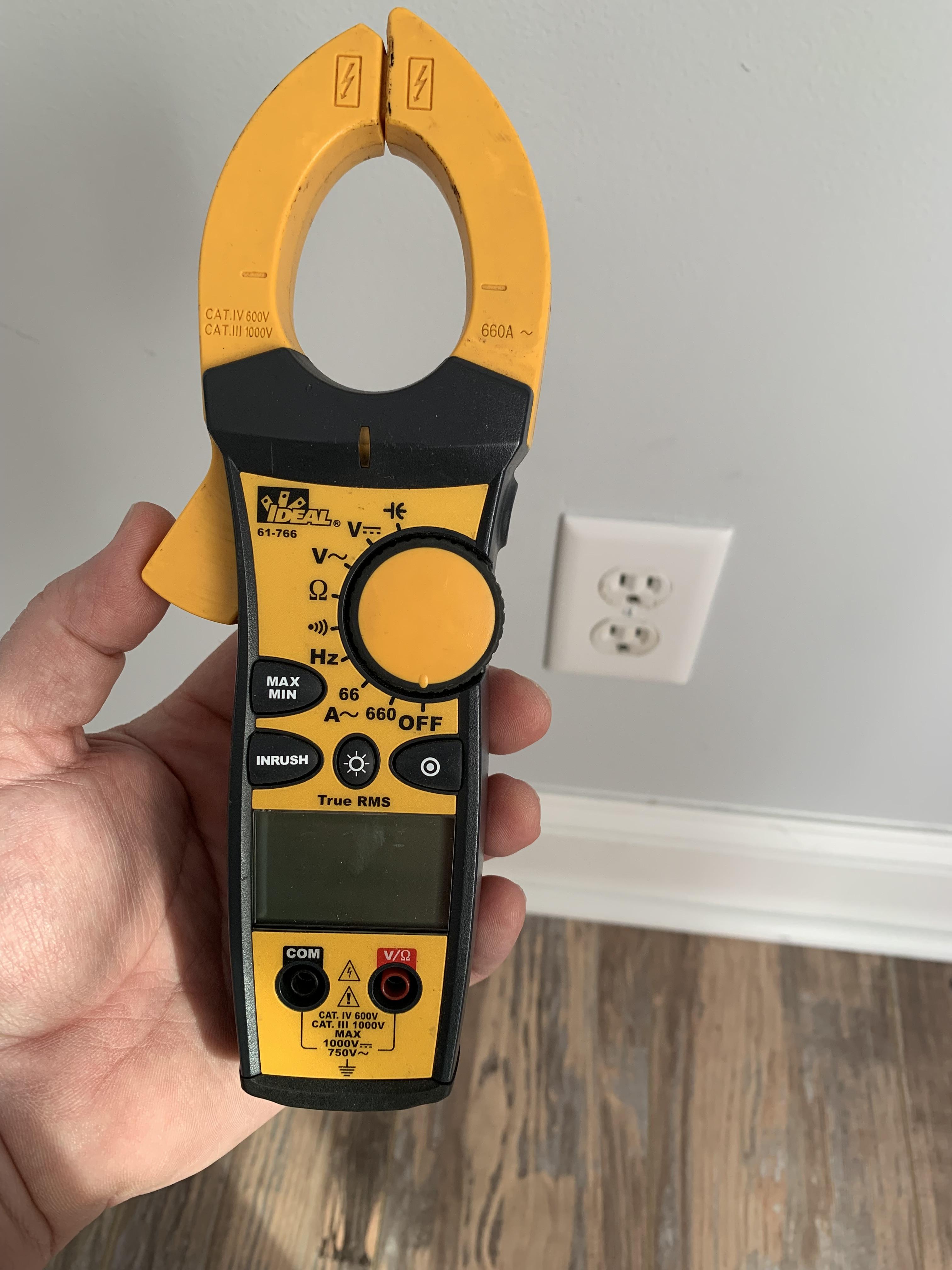
This is a thorough, visual inspection. Per manufacture’s instruction, “Before using or connecting the Meter, visually inspect it to ensure the cases are not cracked and the back case is securely in place. Do not use if the Meter appears damaged”.
Inspect the Test Leads
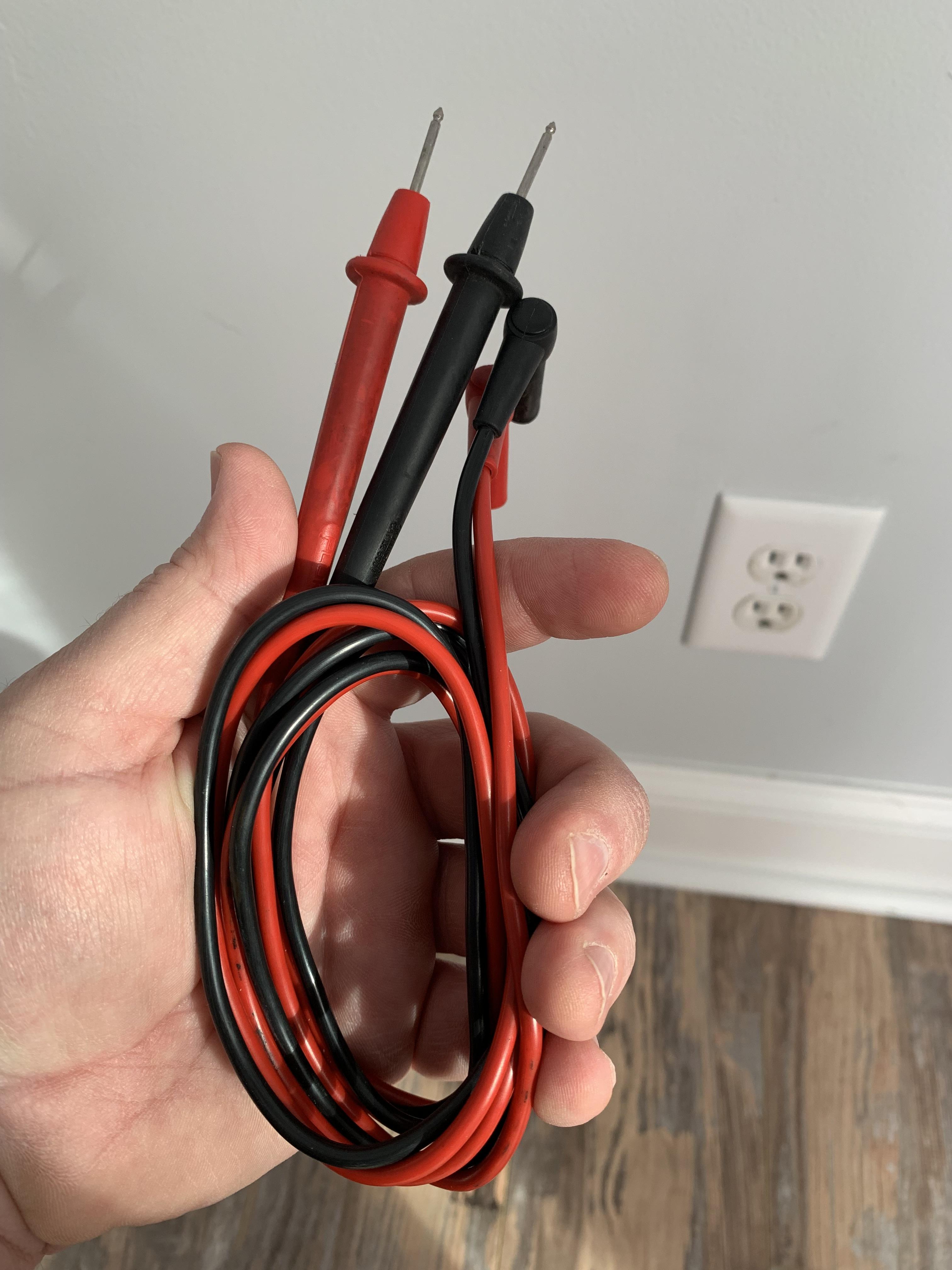
This is a thorough, visual inspection. Per manufacturer’s instructions, “Before using the test leads, inspect carefully for damaged insulation, exposed metal or cracked probes. Check test leads for continuity. Do not use leads if they appear damaged. Use only approved test leads. Do not use improvised connections that could present a safety hazard”. Only use the manufacturer provided leads that came with the meter, or manufacturer approved replacement leads.
Don the Recommended Personal Protective Equipment (PPE) (Safety Glasses & Gloves)

Don the recommended PPE. For this application, the recommended PPE is Safety Glasses ANSI Z87 (or greater) and Leather Gloves. Note this is a recommended level of PPE only. Measuring higher nominal voltage levels may require additional PPE such as voltage rated gloves for shock protection. For this application of testing a 120 volt electrical outlet, the recommended shock protection is simply to “avoid contact”.
Connect the Test Leads to the Meter
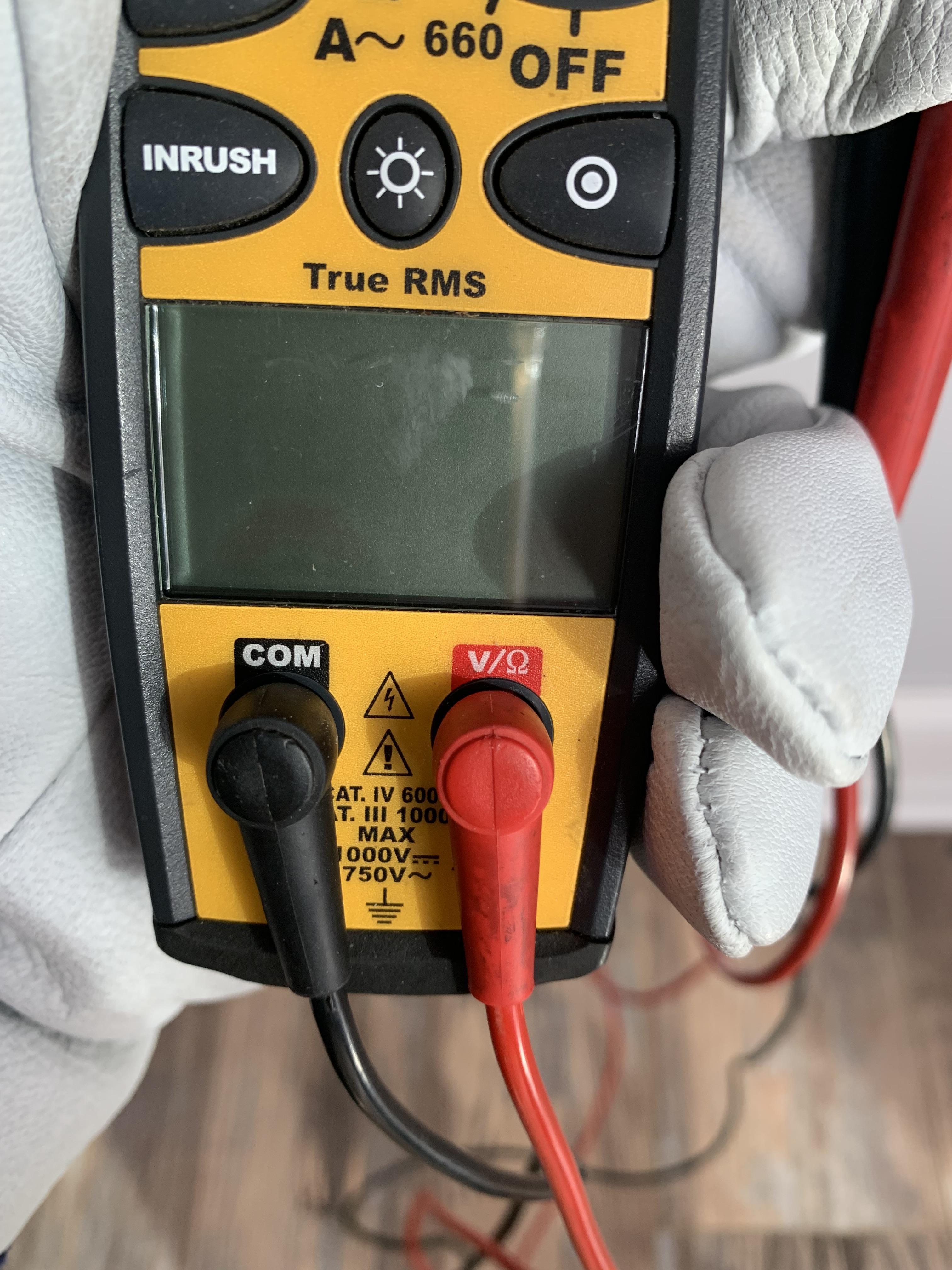
Plug the test leads in to the respective port on the meter. The test leads have color identification to ensure proper placement. Black is the common test lead and Red is considered the live lead. The manual states to “Connect the Common (Black) test lead before connecting the Live (Red) test lead. When disconnecting test leads, disconnect the live test lead first”. Ensure the leads are pushed in all the way to ensure a good connection.
Select the Proper Setting on the Meter
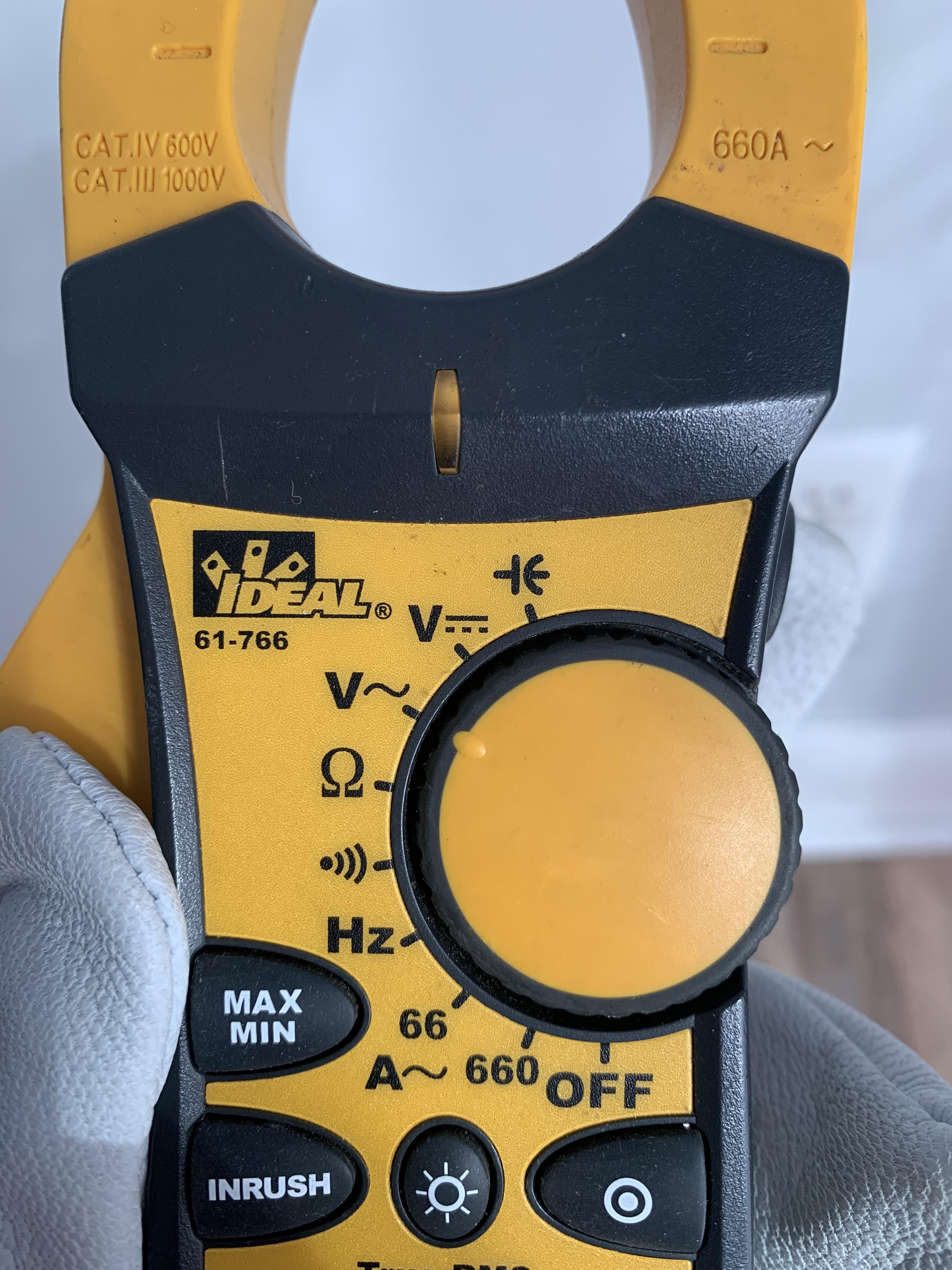
For voltage measurements on residential electrical outlets, select the V AC setting. This setting is to measure Voltage on an Alternating Current (AC) source. Ensure to never attempt to take a voltage measurement on a circuit with a higher nominal voltage rating than what the meter is rated. The meter represented is rated for up to 600V.
Insert Test Probes Into Outlet As Shown
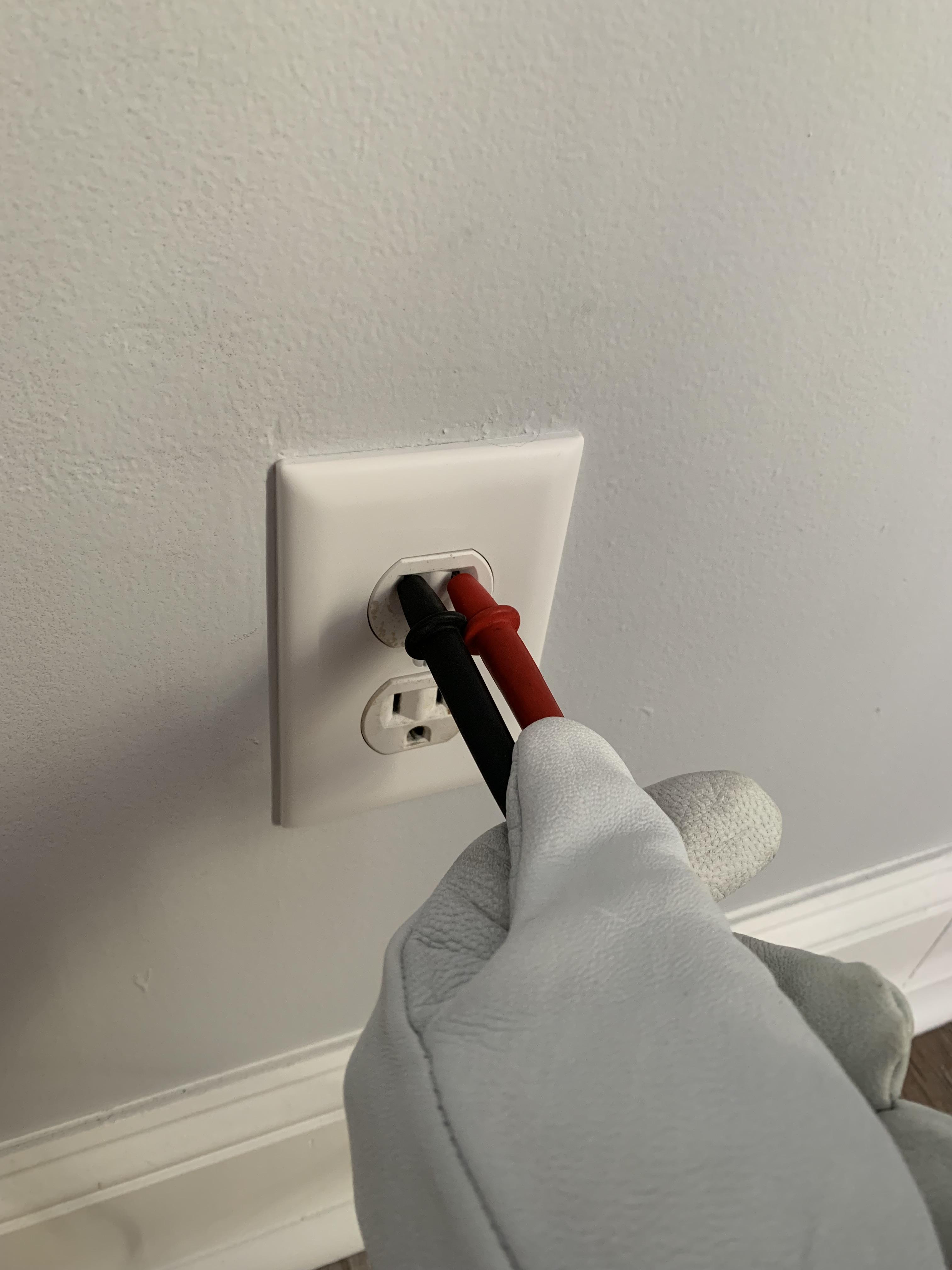
For voltage measurement on a 120 volt outlet, first, insert one test probe into the “Grounded” slot of the outlet, and then insert the other test probe in to the “Ungrounded” slot. Per manufacturer’s instructions, “When using the probes, keep fingers behind the finger guards on the probes”.
Obtain Measurement Value From Display Screen
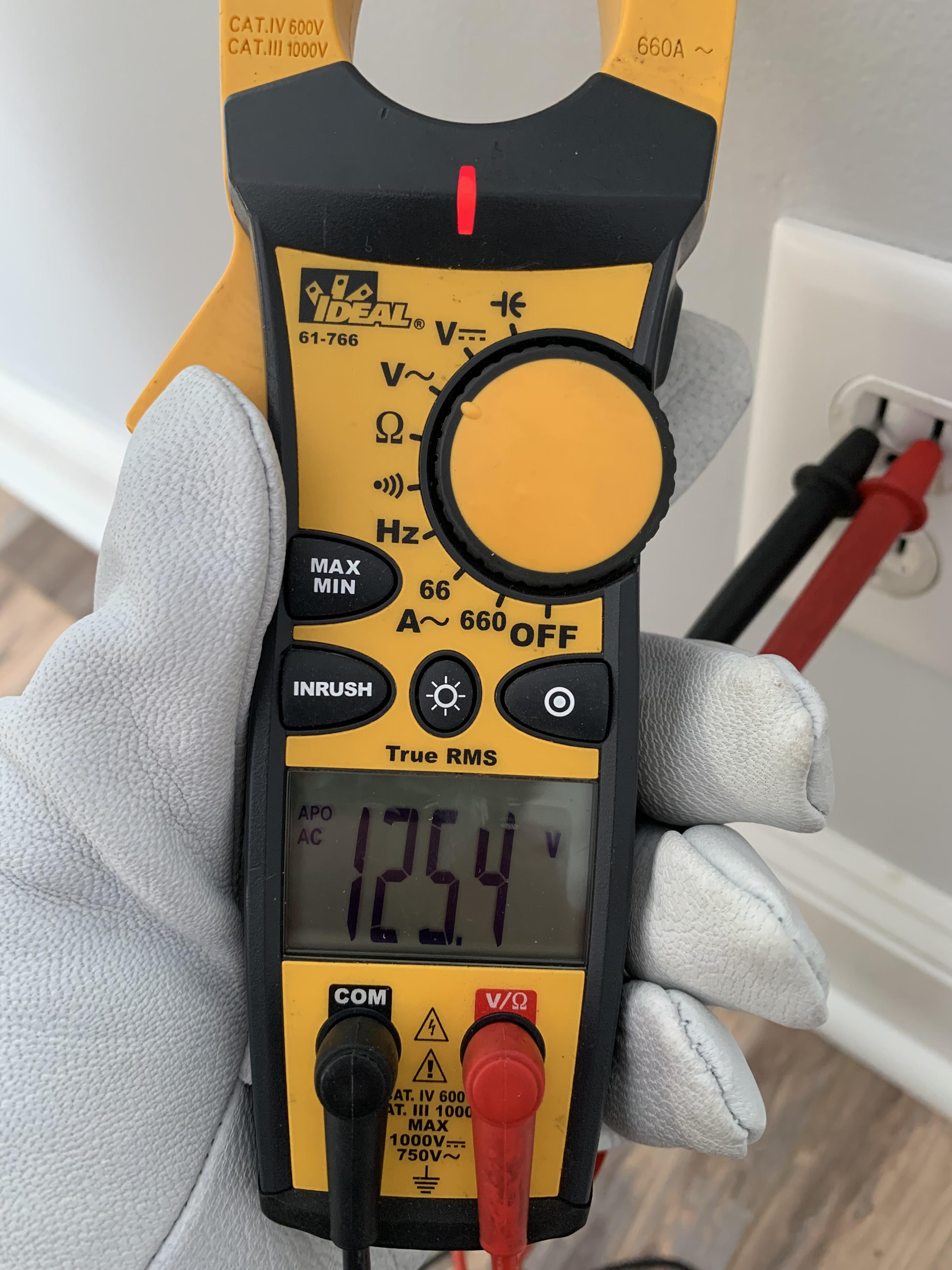
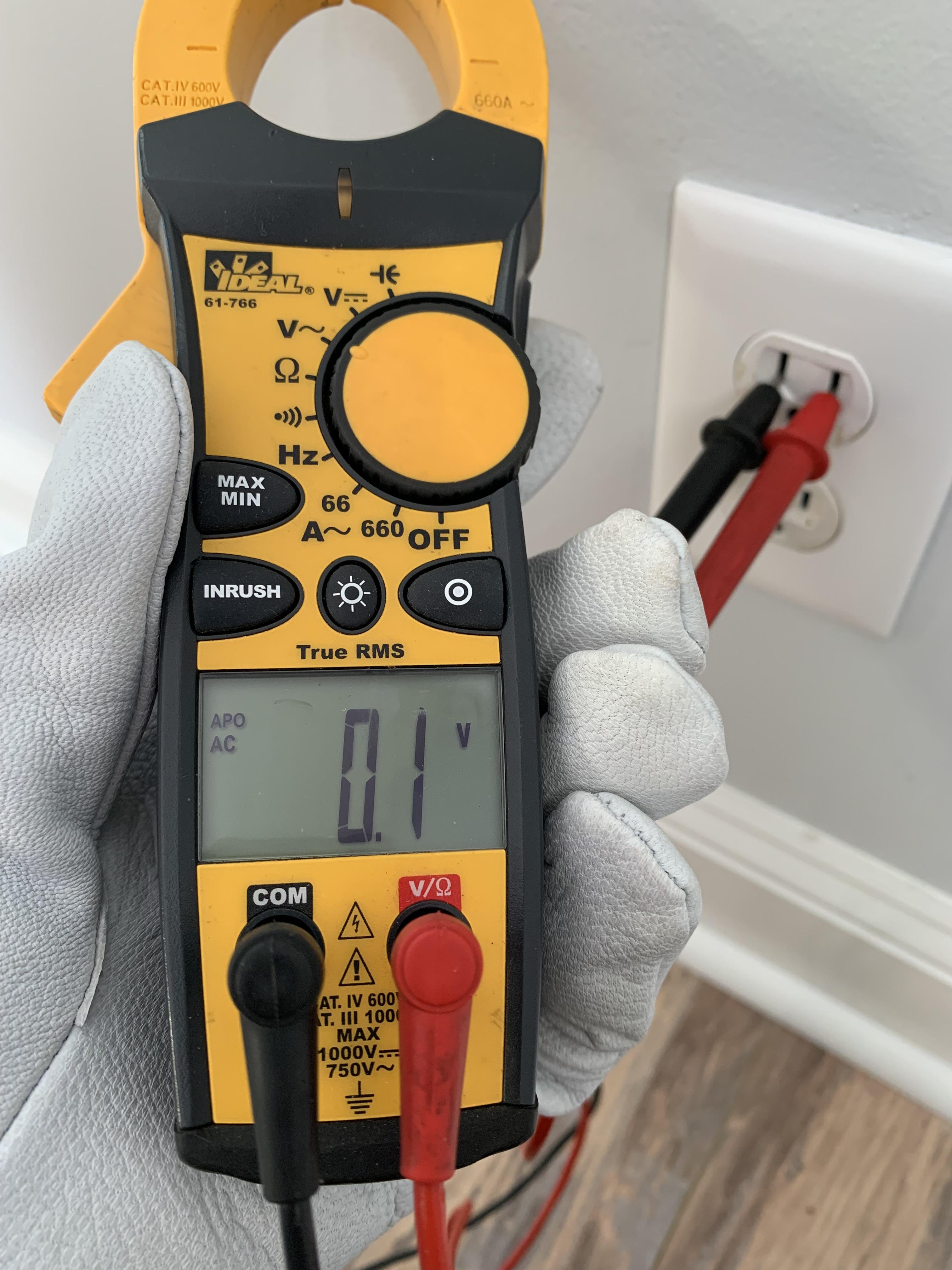
Looking at the display screen on the meter, obtain the voltage value as displayed. When taking voltage measurements, any value within ±3-5% of the nominal circuit rating is generally acceptable. As seen in the picture on the left, this value would be considered an acceptable, normal operating voltage. The picture on the right displays what is considered “Absence of voltage”, or “de-energized”. Absence of voltage is acheived by getting a measurement value that is “at or near zero”.
Remove Test Leads From Outlet and Turn "Off" the Meter
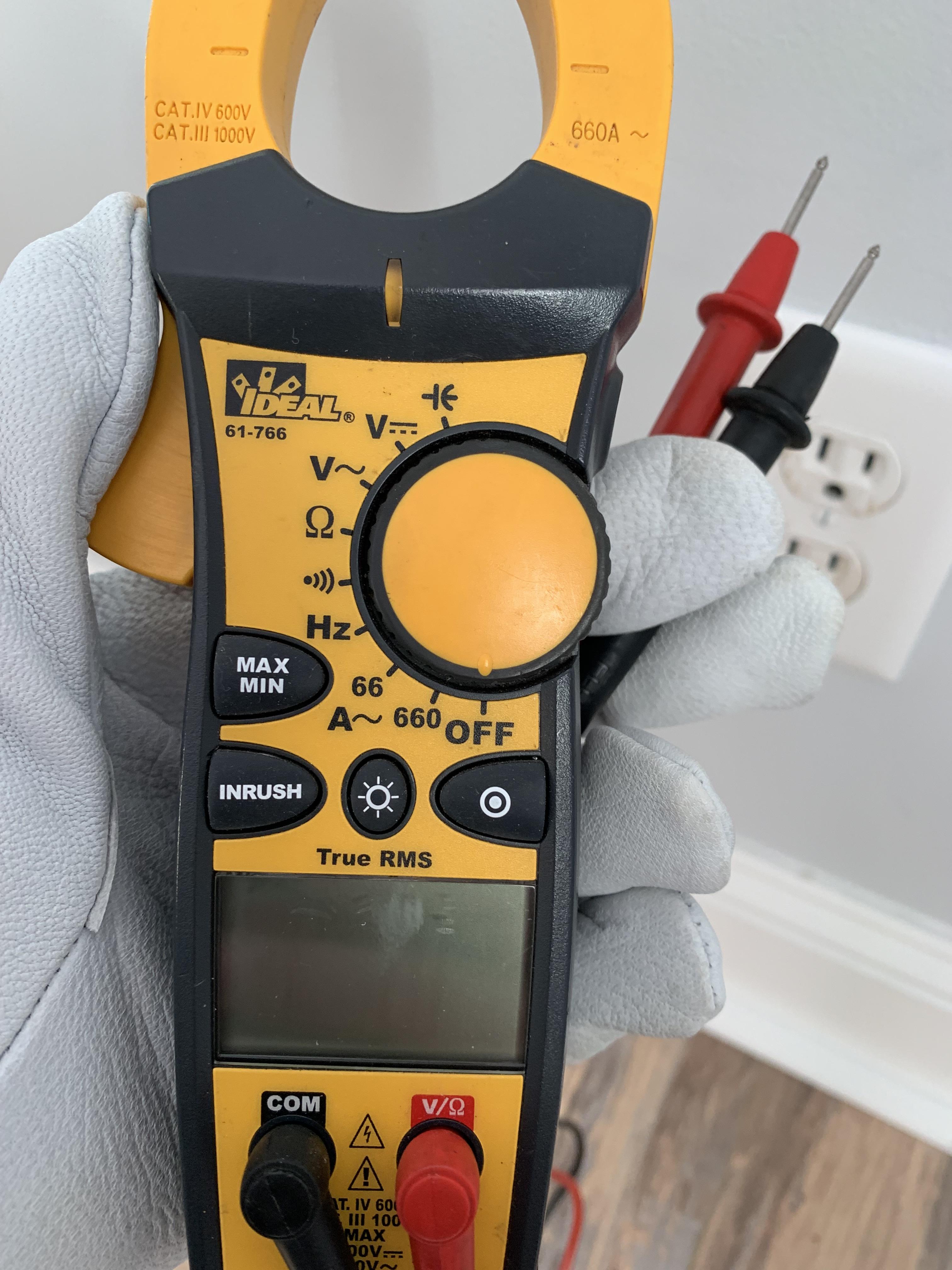
Remove the test leads from the outlet by first removing the test probe from the "Ungrounded" slot on the outlet. Second, remove the test probe from the "Ungrounded" slot on the outlet. Turn the selector switch to the Off position. Unplug the test leads from the meter by following the manufacturer’s instructions of “disconnecting the Live test lead first”. Properly store the meter and test leads according to manufacturer’s recommendations.
Note: Per manufacture's instructions, to verify proper operation of the meter 3 step verification is required.
(1) Test a known "Live" source
(2) Tet the circuit in question
(3) Test the know "Live" source again.
When verifying absence of voltage, this is often referred to as a Live, Dead, Live test.
Video Demonstration of All Steps
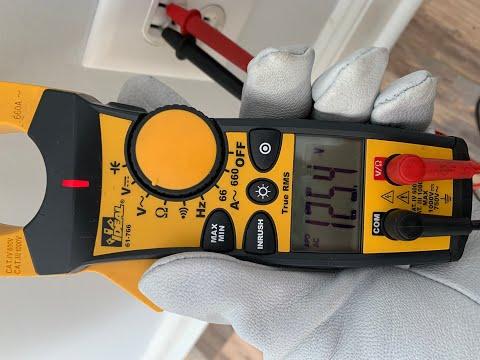
Thank you for watching my Instructable. I hope by following these steps, you will be able to safely and accurately, be able to obtain a voltage measurement on a 120 volt outlet.